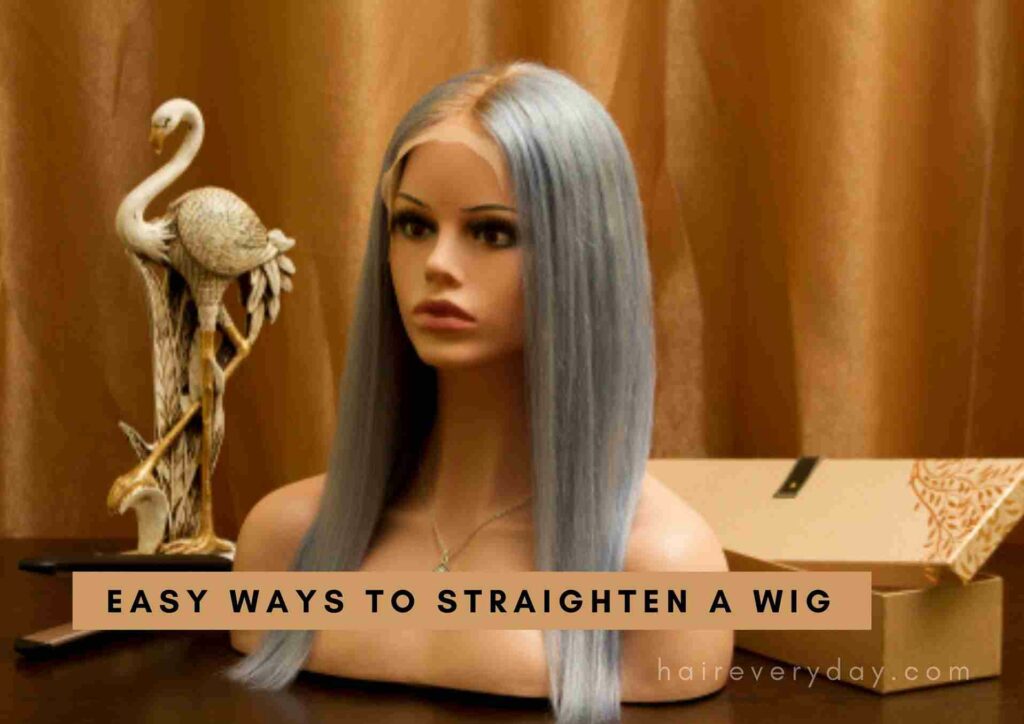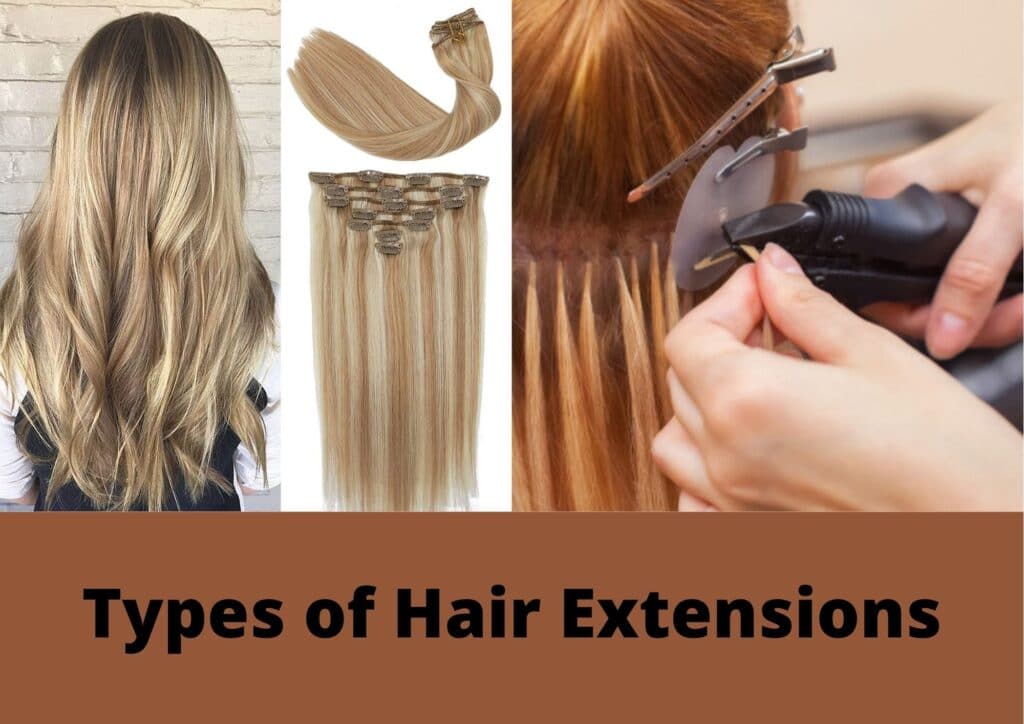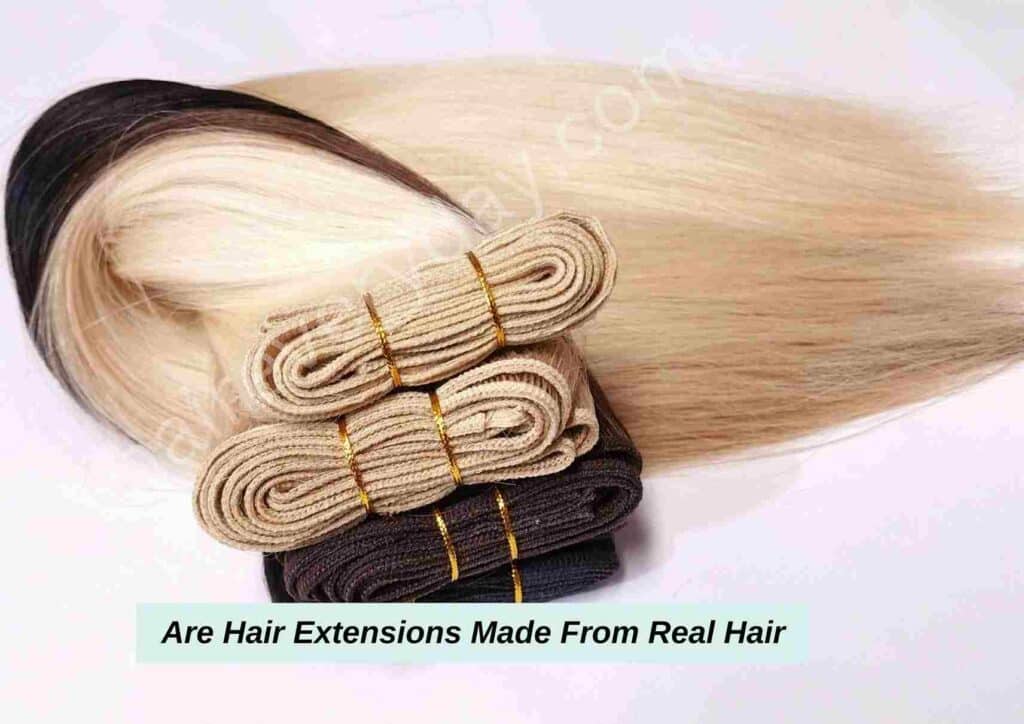Straightening your human hair wig is a simple process that can be done at home with a few basic tools. Here’s a step-by-step guide on how to straighten a human hair wig.
If your wig is naturally wavy or curly, you may want to straighten it for a different style. Here’s a step-by-step guide on how to straighten a human hair wig safely and effectively.
How To Straighten A Human Hair Wig?
Here’s a quick answer to how to straighten a human hair wig:
Step 1: Gather your supplies.
You will need:
- A heat protectant spray
- A flat iron or hot comb
- A wig stand or mannequin head
- Hair clips
Step 2: Prepare the wig.
Place the wig on a wig stand or mannequin head. If the wig is wet, blow-dry it until it is completely dry. Apply heat protectant spray to all of the hair.
Step 3: Straighten the hair.
Section the hair into manageable sections. Use your flat iron or hot comb to straighten each section of hair, working from the roots to the ends. Do not hold the heat tool on the hair for too long, as this can damage the hair.
Step 4: Style the hair.
Once all of the hair has been straightened, you can style it as desired. You can use a round brush and blow dryer to add volume, or you can curl the hair with a curling iron.
Related: How To Wash A Wig With Fabric Softener
Straighten Human Hair Wig With Flat Iron
Both synthetic and human wigs can be used with this technique. But first, be careful to confirm whether or not your wig is of great quality. If you attempt to straighten low-quality wigs with a flat iron, they might get destroyed, especially if they are low-quality synthetic wigs.
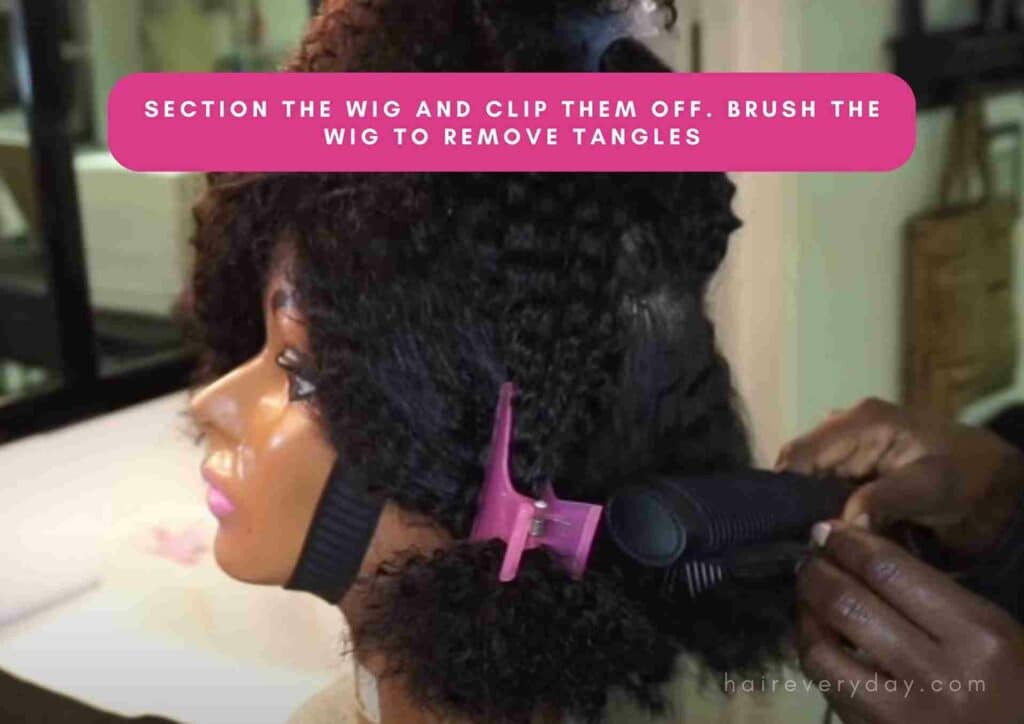
- Step 1: Ensure the hair straightener you want to use has a temperature control setting.
- Step 2: Use a comb to detangle the hair gently, then apply heat protectant all over it, root to tip. This will aid in keeping moisture within the wig and guard against heat damage.
- Step 3: Verify if your wig can withstand direct heat by doing a strand test.
- Even while flat irons have a maximum temperature of 450 °F (232 °C), most wigs, especially synthetic ones, cannot handle that heat level. Your wig will last longer if you maintain your flat iron set to lower heat of between 230-250 °F (110-121 °C). Iron them between 250-270 degrees Fahrenheit if the wig strands are thick.
- Step 4: Straightening the wig will be simpler if you work in small sections. Use hair clips to hold the wig’s front and sides out of the way so you can move freely, leaving a little opening at the back.
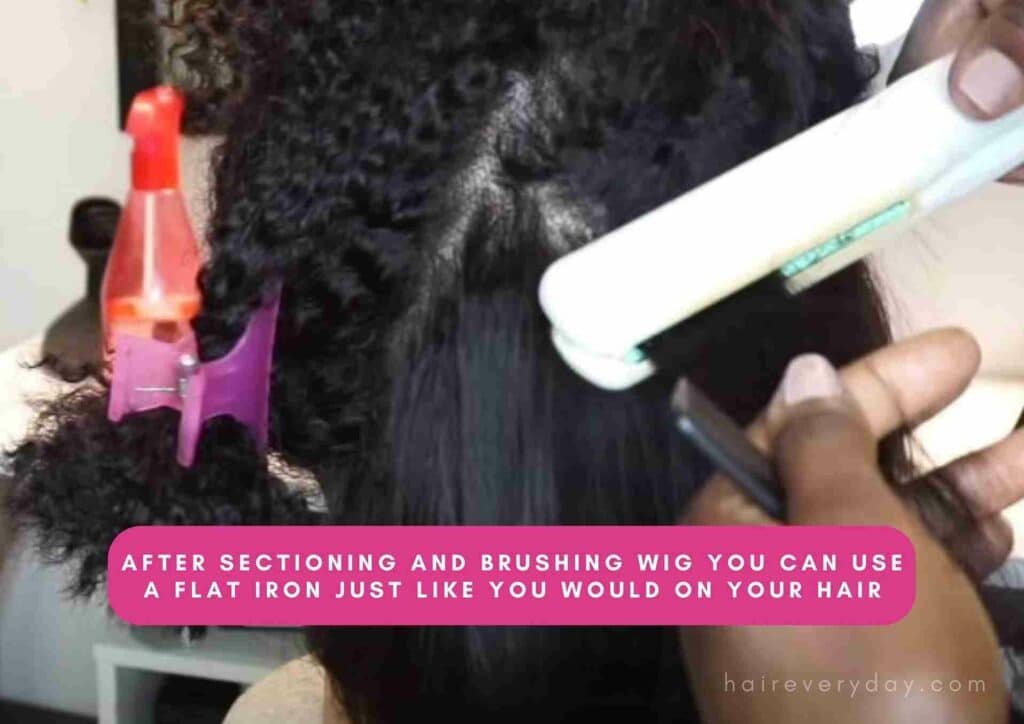
- It’s recommended to disentangle wig hair in pieces because it may get highly tangled.
- Step 5: After that, begin straightening some of the wig’s bottom strands. Continue in this manner until the bottom portion is complete. After that, straighten the centre of your wig’s strands. Finally, reach the top and straighten the wig’s entire top.
- Step 6: After straightening the entire wig, allow them to remain still for five to six minutes.
- Step 7: After the entire wig has completely cooled and dried, use a wide-toothed brush and comb the strands softly and uniformly.
Use Steam Method To Straighten Human Hair Wig
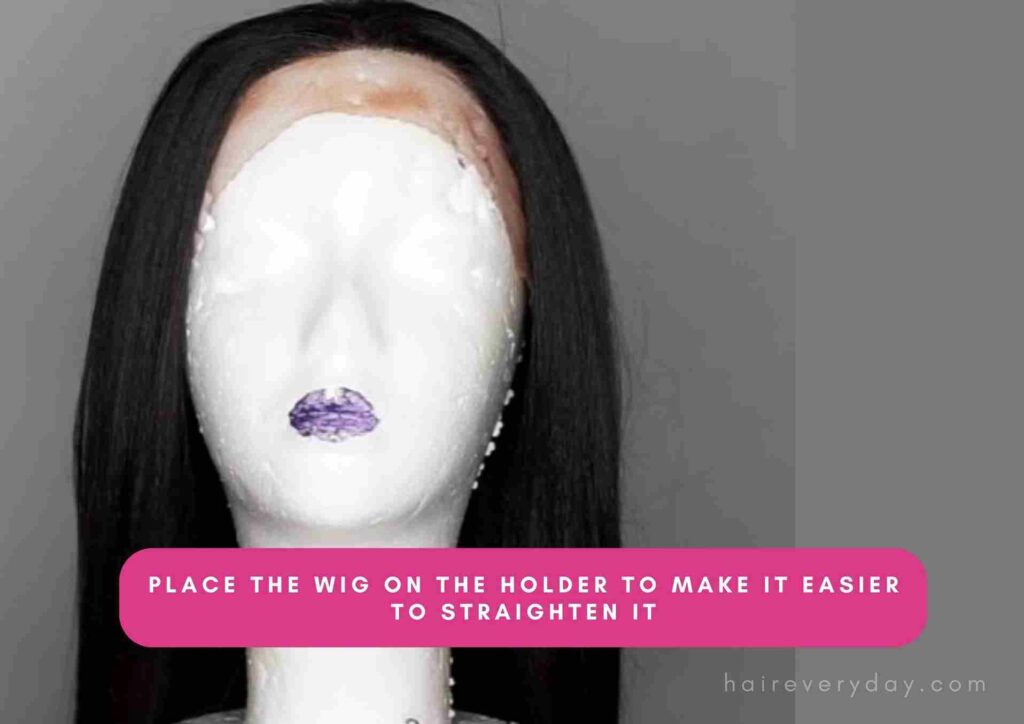
- Step 1: Put the wig on a mannequin head or a stand first.
- Step 2: Use a pin to secure the wig to the stand.
- Step 3: After that, brush any knots out. Be extremely delicate and patient here; don’t be harsh with the hair.
- Step 4: You may plug up and preheat your portable steamer while untangling the wig’s strands.
- Step 5: Take the portable steamer in one hand and the wig brush in the other.
- Step 6: Section by section, brush and steam the wig strands. Do not hold the steam too closely to the wig, just in precaution.
- Step 7: Repeat the procedure three times, working your way through each region until the wig is completely straight.
- Step 8: When you’re sure you’re done, turn off the steamer and let the wig cool and thoroughly air dry. Spray some wig conditioner all over the wig once it has completely dried.
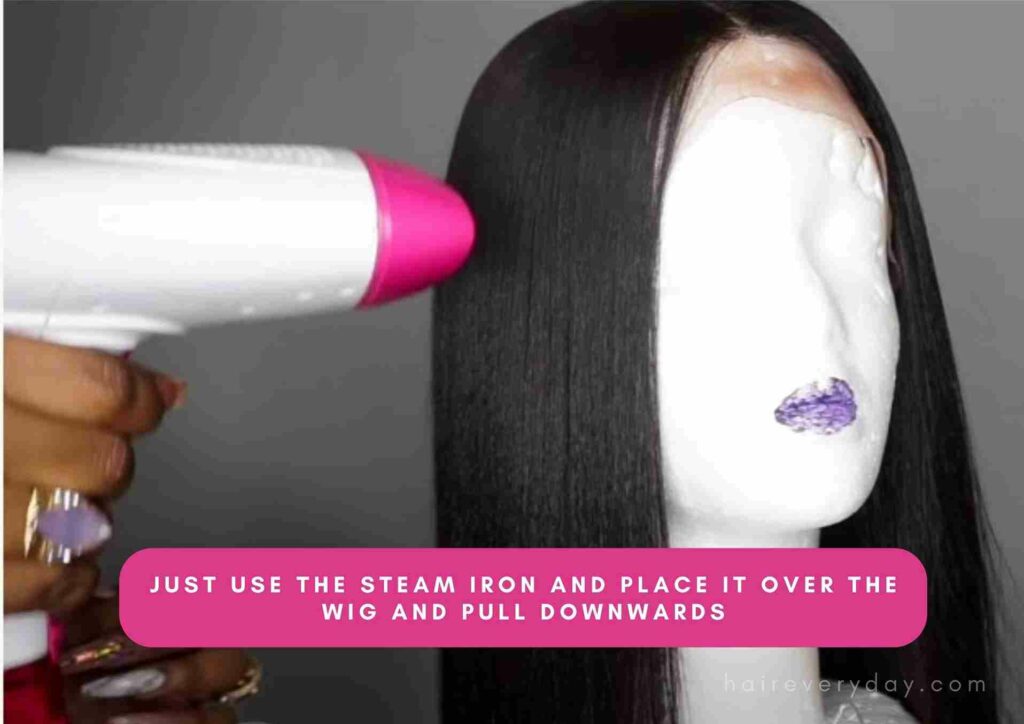
I use the Philips STH3000/20c Handheld Garment Steamer can be used as a portable steamer. This provides uneven Straightening to the wig and gives a shiny finish.
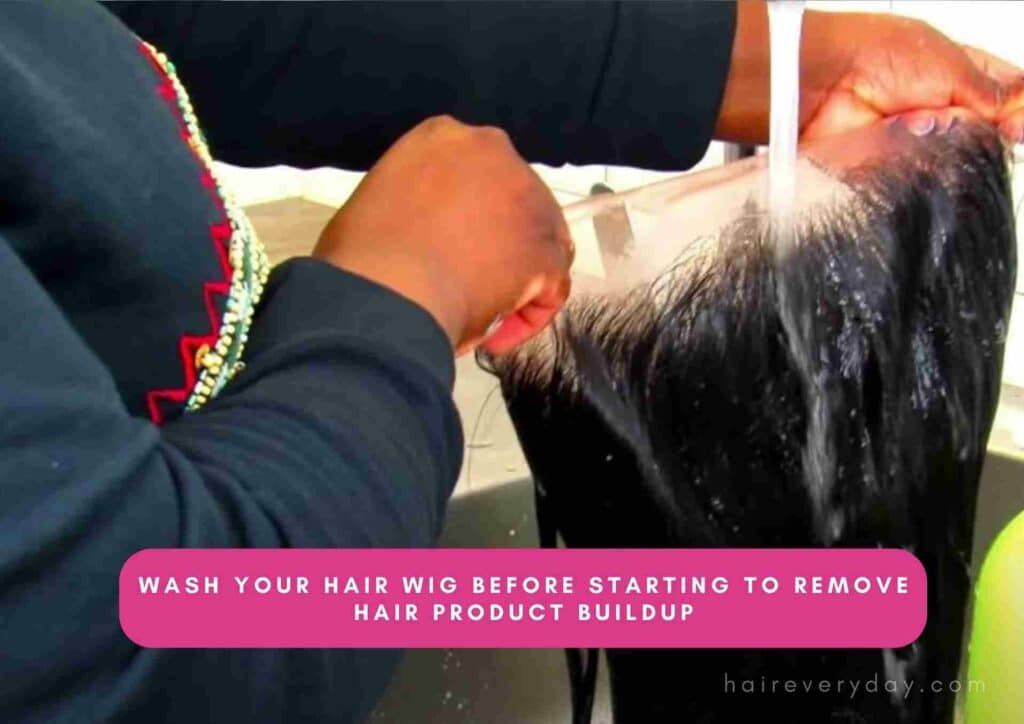
Hot Water Method Can Be Used To Straighten Human Hair Wig
Both human and synthetic wigs may be treated using this technique, but if you don’t do it correctly, your human wig can get damaged. So, if you are not a pro or have little expertise with it, we advise against using it on a human wig.
- Step 1: You need to first boil some water before using this procedure. Boil the water until you notice a bubble.
- Step 2: Put your wig on a stand or tripod so that you may use a pin to secure it to the stand because you’ll need both hands to straighten it.
- Step 3: Gently brush the entire wig with a comb. Make sure the wig is free of tangles.
- Step 4: Apply the steam from the hot water on the wig now. When the steam has been equally distributed, leave it for 5 to 10 minutes to allow it to cool.
- Step 5: Use a wide-toothed or a bristles brush to comb it even when it has cooled and dried. Just make sure your brush is gentle enough.
- Step 6: If you don’t receive the desired outcomes the first time, repeat this procedure.
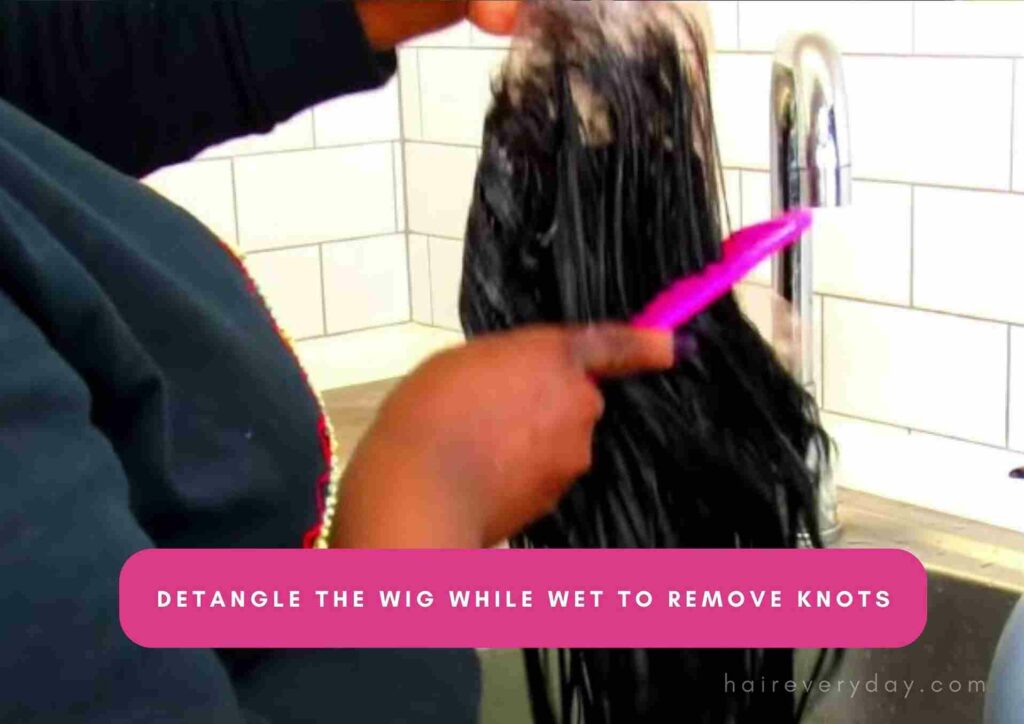
Use Hair Dryer Method To Straighten Human Hair Wig
For synthetic wigs, use this technique as well. Try not to use this technique if your wig is of poor quality. Particularly, you should only apply the blow dryer technique to premium wig fibre.
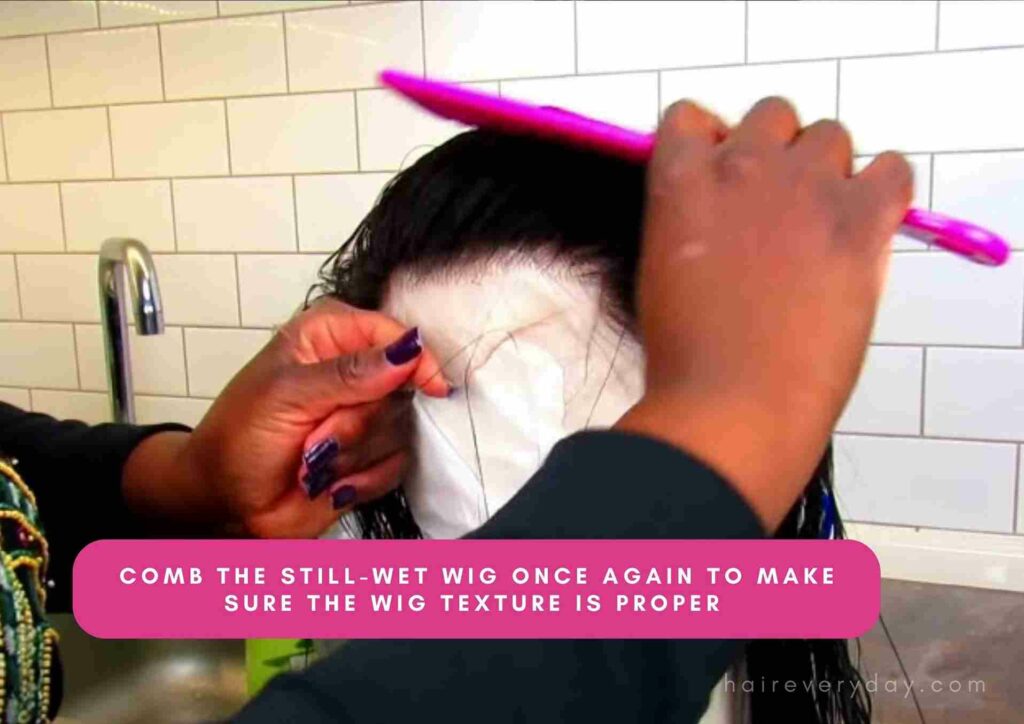
- Step 1: You must first do a compatibility test before you can begin straightening. Clip a little section of the wig’s hair.
- Step 2: Test the item by heating it with a warm setting on the hair dryer. That will let you ensure that your wig is heat-resistant. Check to see whether the hair becomes frizzy or crumbles. If so, your wig cannot be straightened using the hairdryer technique.
- Step 3: If the wig succeeds in the test, set it on a stand and pierce it with a pin.
- Step 4: With a wide-toothed comb, separate the wig hair into sections and completely untangle it.
- Step 5: You must hold the hair as straight as possible to straighten out when heated. One method for doing this is to hold the hair dryer in one hand while holding the ends of the hair in the other.
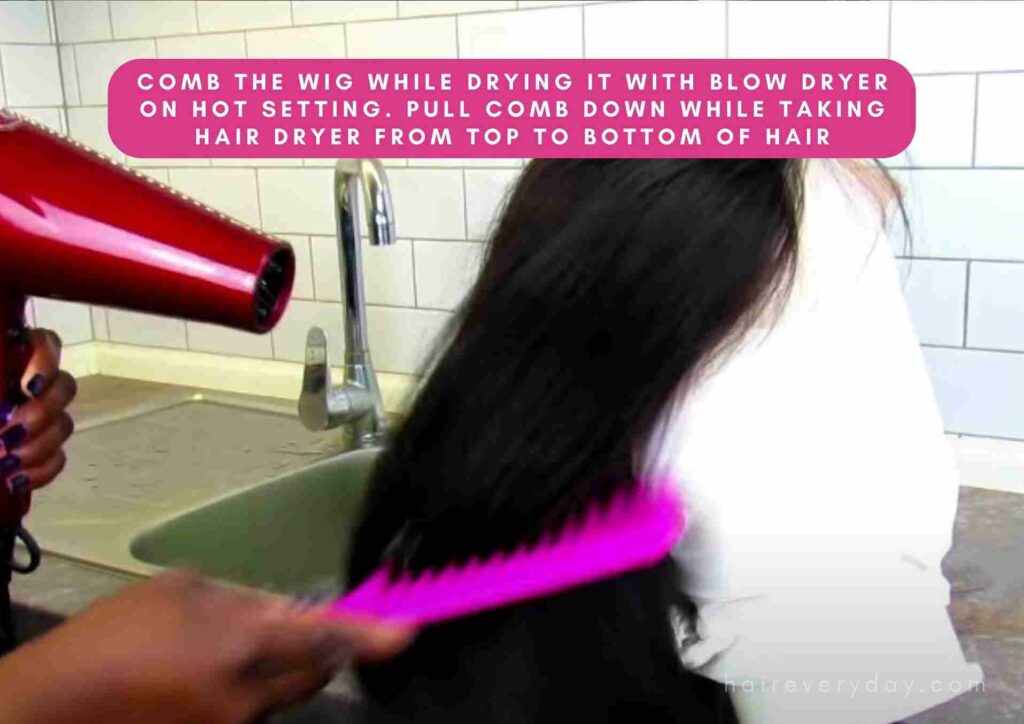
- Step 6: Point the nozzle of your hair dryer downward, turn it on, and hold the drier in one hand. Remember to adjust it to the medium setting.
- Step 7: Starting at the wig’s roots, carefully work your heating tool’s nozzle down its whole length. Move slowly, but don’t leave the nozzle in one spot for an extended period.
- Step 8: After straightening the first portion, remove another piece of wig hair, untangle it, and then repeat the process with the remaining hair.
Continue doing this until the entire wig is straight, then admire your new appearance.
My go to product is the AGARO HD-1120 2000 Watts Professional Hair Dryer as it protects the hair from frizzy and makes it smoother.
Wrapping Up!
Whether your wig is synthetic or composed of real hair, always remember that the lowest heat setting is best while straightening if you’re unsure whether the material in your wig is heat-resistant, always heat test it.
When working with heated instruments or hot water, exercise care.
The use of a flat iron and hot water are the safest techniques. However, it relies on how comfortable you are employing these strategies.
You can try the remaining techniques or your preferred one if you are self-assured and have a top-notch wig. While straightening your wig, always use high-quality hair straighteners.
We hope that the article delivered valuable insights. Let us know which method you are most comfortable with while straightening your synthetic or human hair wig.
Also Read:
To Summarize

